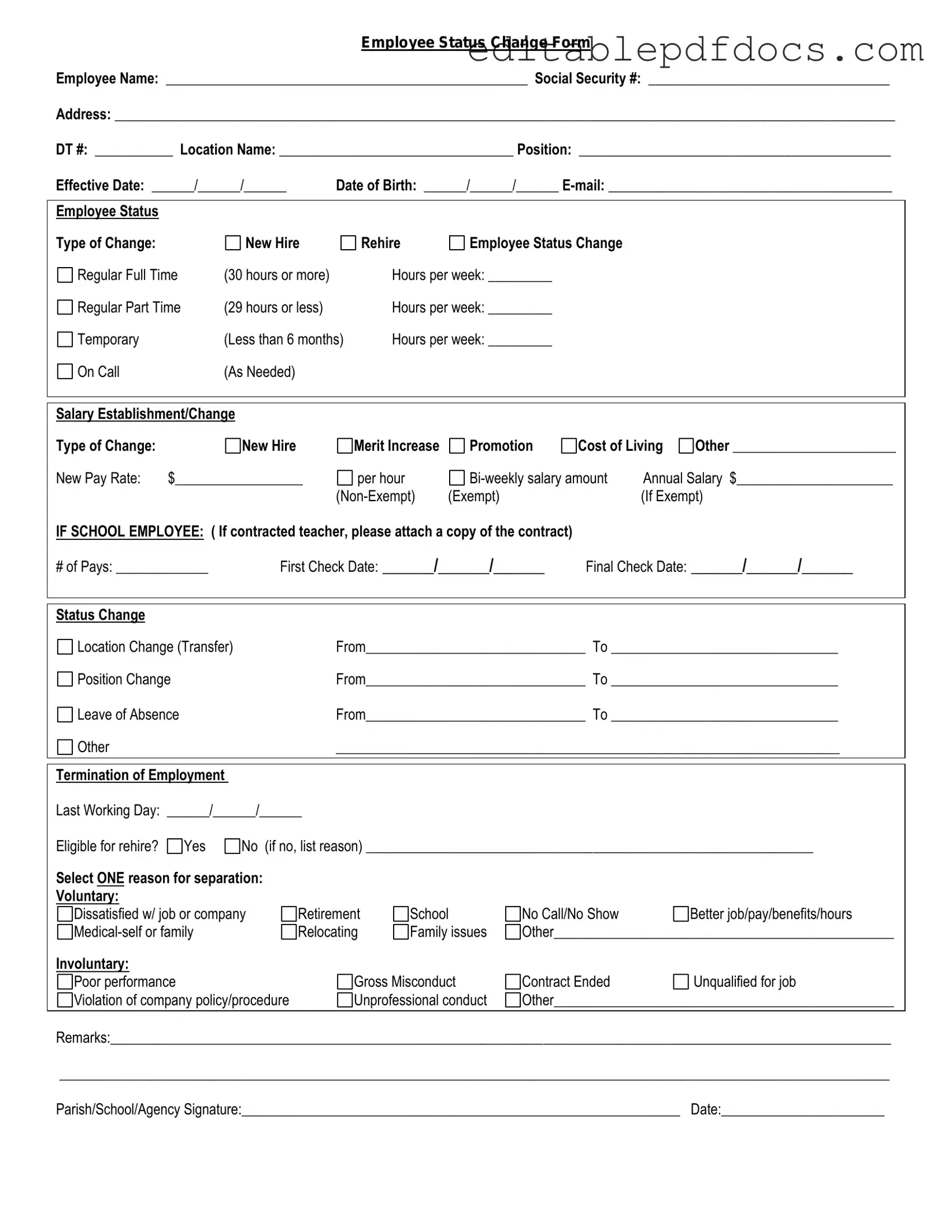Fill a Valid Employee Status Change Template
The Employee Status Change form is a document used by organizations to officially record any changes in an employee's status, such as promotions, transfers, or terminations. This form ensures that all relevant departments are informed and can update their records accordingly. Understanding how to properly fill out this form is essential for maintaining accurate employee information.
To make the process easier, click the button below to fill out the Employee Status Change form.
Open Editor Now
